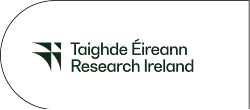
Geomodelling:
The discovery and management of raw material and groundwater resources in Ireland is critically dependent on the existence of high quality models of the subsurface. Building on the existing national databases for the minerals and groundwater industries, iCRAG’s 3D Ireland research is developing refined 3D geological models for the Irish subsurface which will underpin future exploration efforts for minerals and groundwater. Our research brings together high quality datasets from industry, academia and government sources to develop the most coherent model of the economically important Carboniferous geology of Ireland. Current and future exploration efforts in Ireland are targeting more subtle, deeper or complex prospects. The discovery of these prospects places greater technical demands on geoscientists. Through the 3D Ireland model, iCRAG is responding to these demands to provide a better backdrop to mineral exploration and minerals research.
Research activities are focussed on the following areas:
- Development of 3D model of the Irish Carboniferous
- Creation of digital database for the Lower Carboniferous
- Improved understanding of the structural and stratigraphic evolution of Carboniferous basins
Geochemistry:
The National Centre for Isotope Geochemistry (NCIG) is a world-class analytical asset facilitating inter-disciplinary research by iCRAG partner institutions with industrial partners and government agencies engaged in applied geoscience research. NCIG is co-located at University College Dublin and Trinity College Dublin. The Centre’s enabling research is being used to develop and test analytical and sample preparation methods which are being used across the challenge-based research areas in iCRAG.
Our geochemistry research is building upon a strong track record of analytical innovation in sedimentary provenance and ore-related research, and will achieve world-class analytical precision and reliability of selected isotope ratio and trace element analytical methods. Furthermore, iCRAG researchers are developing methods for efficient disaggregation and petrographic characterisation of rock samples (ores, reservoir sandstones etc.) prior to chemical and isotopic analysis.
Research activities are focussed on the following areas:
- Optimising sedimentary provenance sampling strategies
- Evaluation of new analytical methods for sediment provenance studies
- Developing new analytical methods for metal ore research
- New low contamination methods for analysis of groundwater
Further details on the NCIG facility are available on our (opens in a new window)Facilities webpage
Geophysics:
Geophysical sensing and imaging play a key underpinning role in many applied geoscience activities including ore deposit discovery, sub-sea marine geoscience and geohazard estimation. Geophysical imaging involves three main steps: sensing, data processing and data inversion (constructing a ‘model’ or image from ‘data’). The quality of the images is dependent on the quality/quantity of the sensors, the data processing procedures and the mathematical algorithms used to ‘invert’ the data.
Our geophysics research aims to provide the cohesive sensing and imaging infrastructure to enable iCRAG’s challenge-based research. We are driving new methodological developments in this area using Ireland as a geographical test bed and comparing noise images to images produced using teleseismic earthquakes. Ireland is ideally located to advance this research field, with some of the world’s highest levels of background seismic noise, generated by ocean waves in the north-east Atlantic.
Research activities are focused on the following areas:
- Data network integration and data assimilation
- Geophysical data inversion
- Targeted shallow crustal models
- Baseline seismicity studies in Ireland
- Noise correlation methodological development
- Pseudo real time data processing and analysis
Geosensing:
Geosensing methodologies and technologies provide the datasets necessary to characterize the physical, chemical and biological aspects of the earth system and our environment. They include passive or active data acquisition of either remotely-sensed or in-situ measurements in the atmospheric, terrestrial or marine realms.
Geodata:
In geodata we analyze data with the aim of determining the underlying information contained data sets using a combination of Big Data and mathematical modelling. The Geodata Platform uses a data analytics learning approach to allow patterns in the data to drive our understanding of the data itself. iCRAG researchers are explore a range of approaches with a focus on Deep Learning – both supervised and unsupervised. Machine learning is driving a revolution in geodata application that can often outstrip the traditional ‘model-driven’ approach.









